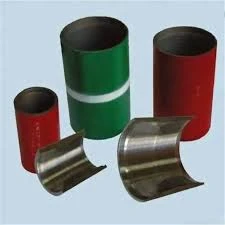- Afrikaans
- Albanian
- Amharic
- Arabic
- Armenian
- Azerbaijani
- Basque
- Belarusian
- Bengali
- Bosnian
- Bulgarian
- Catalan
- Cebuano
- Corsican
- Croatian
- Czech
- Danish
- Dutch
- English
- Esperanto
- Estonian
- Finnish
- French
- Frisian
- Galician
- Georgian
- German
- Greek
- Gujarati
- Haitian Creole
- hausa
- hawaiian
- Hebrew
- Hindi
- Miao
- Hungarian
- Icelandic
- igbo
- Indonesian
- irish
- Italian
- Japanese
- Javanese
- Kannada
- kazakh
- Khmer
- Rwandese
- Korean
- Kurdish
- Kyrgyz
- Lao
- Latin
- Latvian
- Lithuanian
- Luxembourgish
- Macedonian
- Malgashi
- Malay
- Malayalam
- Maltese
- Maori
- Marathi
- Mongolian
- Myanmar
- Nepali
- Norwegian
- Norwegian
- Occitan
- Pashto
- Persian
- Polish
- Portuguese
- Punjabi
- Romanian
- Russian
- Samoan
- Scottish Gaelic
- Serbian
- Sesotho
- Shona
- Sindhi
- Sinhala
- Slovak
- Slovenian
- Somali
- Spanish
- Sundanese
- Swahili
- Swedish
- Tagalog
- Tajik
- Tamil
- Tatar
- Telugu
- Thai
- Turkish
- Turkmen
- Ukrainian
- Urdu
- Uighur
- Uzbek
- Vietnamese
- Welsh
- Bantu
- Yiddish
- Yoruba
- Zulu
Stainless Steel Couplings for Reliable Piping and Plumbing Applications
Understanding Coupling Stainless Steel Fittings
In the realm of plumbing, piping, and various construction applications, fittings play a crucial role in ensuring the integrity and efficiency of systems. Among these fittings, coupling stainless steel fittings stand out due to their strength, durability, and versatility. This article will delve into what coupling stainless steel fittings are, their applications, benefits, and considerations when choosing the right fitting for your project.
What are Coupling Stainless Steel Fittings?
Coupling stainless steel fittings are mechanical devices used to connect two pipes or tubes together. They come in various sizes and types, allowing for seamless integration between sections of pipe. The material—stainless steel—offers superior corrosion resistance compared to other materials, making it an excellent choice for environments exposed to moisture and harsh chemicals.
Couplings can be classified mainly into two types threaded and slip-on. Threaded couplings are designed with internal threads that allow for easy connection with pipes that have external threads. Slip-on couplings, on the other hand, slide over the pipe's ends and are usually welded or secured mechanically to provide a robust connection.
Key Applications of Coupling Stainless Steel Fittings
Coupling stainless steel fittings are extensively used in various industries, including
1. Water and Wastewater Management In water treatment plants and sewage systems, these fittings help in connecting pipes while withstanding the pressure and environment of water systems.
2. Chemical Processing Given their resilience to corrosive substances, stainless steel couplings are ideal for chemical pipelines that transport reactive fluids.
3. Food and Beverage Industry The sanitary properties of stainless steel fittings make them suitable for use in food processing, where hygiene is paramount.
4. Construction In building projects, stainless steel fittings are used in frameworks, plumbing systems, and HVAC installations.
5. Marine Applications The corrosion resistance of stainless steel is especially beneficial in marine environments, where fittings may be exposed to saltwater.
Benefits of Coupling Stainless Steel Fittings
Using coupling stainless steel fittings presents numerous advantages
coupling stainless steel fitting

1. Corrosion Resistance Stainless steel, which contains chromium, is less susceptible to rust and corrosion than other metals. This attribute extends the lifespan of pipes and systems.
2. Strength and Durability Stainless steel fittings exhibit excellent tensile strength, ensuring they can endure significant pressure without failing.
3. Temperature Resistance These fittings can handle high temperatures, making them suitable for hot water systems and industrial applications that involve extreme conditions.
4. Hygienic Properties The non-porous surface of stainless steel resists bacterial growth, making it ideal for sanitary applications such as food and beverage processing.
5. Aesthetic Appeal Stainless steel has a sleek, modern appearance, making it a popular choice for visible installations where aesthetics matter, such as in residential plumbing or architectural designs.
Considerations When Choosing Coupling Stainless Steel Fittings
While coupling stainless steel fittings offer many benefits, there are factors you should consider before selecting them for your project
1. Material Grade Stainless steel fittings are available in various grades, such as 304 and 316. Grade 316 is more resistant to corrosion, especially in saline environments, making it a better choice for marine applications.
2. Size Compatibility Ensure that the fittings are compatible with the pipe sizes you are using. Accurate measurements and specifications are essential for optimal performance.
3. Welding and Installation Requirements Depending on the type of coupling—threaded or slip-on—the installation process may vary. Understanding the installation process can save time and prevent issues.
4. Cost Considerations Stainless steel fittings can be more expensive than those made from other materials. Assess your budget and the long-term benefits of using durable fittings.
5. Supplier Reputation Choose a reliable supplier with a proven track record in providing high-quality stainless steel fittings. Research reviews and feedback to ensure product reliability.
Conclusion
Coupling stainless steel fittings are indispensable components in many industrial and commercial applications. Their unique properties, including corrosion resistance, durability, and aesthetic appeal, make them a preferred choice across a multitude of industries. By understanding their applications, benefits, and selection criteria, consumers can make informed decisions that enhance the efficiency and longevity of their piping systems. Whether in construction, food processing, or any other sector, investing in high-quality coupling stainless steel fittings can lead to significant long-term advantages.
-
Tubing Pup Joints: Essential Components for Oil and Gas OperationsNewsJul.10,2025
-
Pup Joints: Essential Components for Reliable Drilling OperationsNewsJul.10,2025
-
Pipe Couplings: Connecting Your World EfficientlyNewsJul.10,2025
-
Mastering Oilfield Operations with Quality Tubing and CasingNewsJul.10,2025
-
High-Quality Casing Couplings for Every NeedNewsJul.10,2025
-
Boost Your Drilling Efficiency with Premium Crossover Tools & Seating NipplesNewsJul.10,2025







